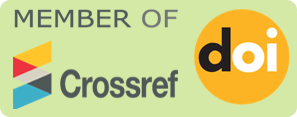THE IMPLEMENTATION OF COMMUNICATIVE LANGUAGE TEACHING (CLT) METHOD THROUGH PLAYFUL ENGLISH APPROACH TO IMPROVE STUDENTS' SPEAKING SKILLS AT PKBM PESONA PULAU TEGAL
DOI:
https://doi.org/10.62567/jpi.v1i2.1225Keywords:
Communicative Language Teaching (CLT), Keterampilan Berbicara, Playful EnglishAbstract
The ability to speak English is very important, especially for coastal communities such as those on Tegal Island, which has tourism potential. However, students at the Pesona Pulau Tegal Community Learning Center (PKBM) still have difficulty communicating, especially in English, because learning has tended to be conventional, focusing on memorization and grammar rather than practical communication. This creates a gap between the need for speaking skills and the teaching methods used, reinforcing students' fear and lack of confidence. Based on these issues, this Community Service activity aims to improve students' speaking skills through the application of the Communicative Language Teaching (CLT) method integrated with the Playful English approach, which involves enjoyable learning through games, role-play, and creative activities. The methods used include guided speaking exercises, conversation simulations, and collaborative projects such as creating promotional posters for beach tourism in English. The results show a significant improvement in students' fluency, confidence, and active participation. Students began to speak more boldly, practice simple sentences, and express ideas spontaneously. The classroom atmosphere became livelier and more enjoyable with minimal psychological barriers such as fear of making mistakes. The implications of this activity are that the CLT approach combined with elements of joy can serve as an effective learning model in non-formal institutions. This method not only enhances language skills but also empowers students socially and emotionally, and can be replicated in similar communities.
References
Abbas, Furrakh. 2021. “The English Language Proficiency As A Global Employment Skill: The Viewpoint Of Pakistani Academia.” Humanities & Social Sciences Reviews 9(3):1071–77. doi: https://doi.org/10.18510/hssr.2021.93106.
Adawiyah, Dita. 2022. “English Language Teaching And Globalization: To Support Economic Growth.” Premise: Journal of English Education and Applied Linguistics 11(1):228–42.
Akbari, Omid. 2016. “Using Authentic Materials in the Foreign Language Classrooms : Teachers ’ Perspectives in EFL Classes.” International Journal of Research Studies in Education 5(2):105–16. doi: 10.5861/ijrse.2015.1189.
Ariyanti, Ariyanti, and Widya Gama Mahakam. 2016. “Psychological Factors Affecting EFL Students’ Speaking Performance.” ASIAN TEFL 1(1):91–102. doi: 10.21462/asiantefl.v1i1.14.
Authar, Nailul et al. 2018. “Student’s Affective Filters at a Suburb Area in Jember.” Pp. 93–97 in The 1st International Conference on Technopreneurship and Education 2018. Surabaya, Indonesia.
Dewi, Rara et al. 2024. “Psychological Factors on Students’ Speaking Skill Problems at Junior High School.” Tell : Teaching of English Language and Literature Journal 12(1):28–38. doi: https://doi.org/10.30651/tell.v12i1.21940.
Elizabeth, Martha, and Cabrera Mera. 2025. “Fear of Making Mistakes and Its Effect on Pre-Service English Teachers ’ Oral Communication Skills.” Revista Cientifica Internacional 12(1):1329–45. doi: https://doi.org/10.69639/arandu.v12i1.679.
Fitzgerald, Simona Laurian, and Carlton Fitzgerald. 2020. “Make Learning Fun.” Pp. 1–9 in 12th International Conference on Education and New Learning Technologies.
Gagić, Aleksandra et al. 2023. “Digital Tools For Language Learning: Exploring Teachers’ Innovative And Engaging Practices.” Pp. 281–87 in International Scientific Conference On Information Technology, Computer Science, And Data Science. Belgrade, Serbia.
Gobena, Gemechu Abera. 2025. “Psychological Barriers Contributing to Students ’ Poor English Language Speaking Skills.” International Journal of Instruction 18(1):273–90. doi: https://doi.org/10.29333/iji.2025.18115a.
Hardinansyah, Veri. 2022. “Using Authentic Materials To Enhance Language Learning: Benefits and Practical Considerations.” Transformational Language, Literature, And Technology Overview In Learning (Transtool) 2(1):16–22.
Hyder, Huma. 2021. “The Pedagogy of English Language Teaching Using CBSE Methodologies for Schools.” Advances in Social Sciences Research Journal 8(3):188–93. doi: DOI:10.14738/assrj.83.9839.
Kiruthiga, E., and G. Christopher. 2022. “The Impact of Affective Factors in English Speaking Skills.” Theory and Practice in Language Studies 12(12):2478–85. doi: DOI: https://doi.org/10.17507/tpls.1212.02© 2022 ACADEMY PUBLICATION.
Pei, Junhong. 2023. “Exploring the Relationships Between Motivation and Anxiety of College Students ’ English Language Learning.” Pp. 59–64 in Proceedings of the 2nd International Conference on Interdisciplinary Humanities and Communication Studies.
Pongen, Lanunochit. 2024. “Exploring The Integration Of Digital Communication Tools In Language Education: A Comprehensive Review.” Journal of Literature and Culture Studies 2(2):9–17. doi: 10.29121/Shodhgyan.v2.i2.2024.20.
Ray, Arnab. 2020. “Authentic Materials for Development of Communicative Competence.” An Interdisciplinary Journal of Literary Studies V(i):154–66.
Rosita, Aulia et al. 2024. “Students’ Psychological Problems In English Speaking Performance.” Journal Of English Language Pedagogy 9(2):132–40.
Salmanova, Shehla. 2025. “Communicative Approach in Foreign Language Teaching : Advantages and Limitations.” Euro-Global Journal of Linguistics and Language Education 2(2):79–88. doi: https://doi.org/10.69760/egjlle.250009.
Sudsom, Udorn, and Thanawan Phongsatha. 2024. “The Comparative Analysis of Forgetting and Retention Strategies in Gamification-Based Assessment and Formative-Based Assessment : Their Impact on Motivation for Learning.” International Journal of Sociologies and Anthropologies Science Reviews 4(1):273–86. doi: https://doi.org/10.60027/ijsasr.2024.3690.
Yadav, Pramod Kumar. 2025. “The Communicative Language Teaching and Its Pedagogy.” International Journal of Advanced Academic Studies 7(2):51–53. doi: https://doi.org/10.33545/27068919.2025.v7.i2a.1363.
Downloads
Published
How to Cite
Issue
Section
License
Copyright (c) 2025 Vike Aprilianin Marwintaria Saputri, Ayu Andriyaningsih, Candra Kusuma

This work is licensed under a Creative Commons Attribution-ShareAlike 4.0 International License.
















